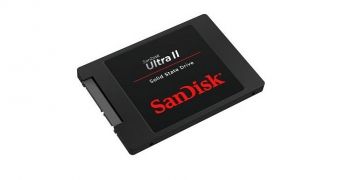Most solid state drives sold to regular people use MLC NAND Flash chips, short for multi-level cell. The name is a bit misleading though, because MLC chips actually only have two cells.
MLC allows for greater capacity and sometimes better performance than SLC, single-level cells, which, in turn, have a greater endurance and, thus, are best suited for enterprise applications.
TLC, however, triple-level cell chips, have, obviously, three cells per die. Essentially, TLC NAND is cheaper than MLC, but slower and likely to fail or grow sluggish over time.
However, the technology is very good for entry-level SSDs. Especially if you only plan to install the operating system on it (meaning that you only have to write a big chunk of data on it once, sparing further write cycles).
SanDisk decided to both take that into account and completely disregard the “suited for the value segment” part when it created the Ultra II SSD line.
The upcoming SSDs, powered by Marvell 88SS9187 controllers and made of Toshiba 19nm NAND chips, have 120 GB, 240 GB, 480 GB, and even 960 GB storage space.
Also, the performance is actually pretty good, at 550 MB/s and 500 MB/s read/write. Better than for many MLC-based SSDs really. Sales will start next month, September 2014, for $80 / €80 to $430 / €430.

 14 DAY TRIAL //
14 DAY TRIAL //